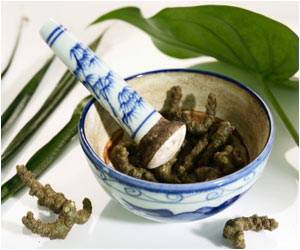The development of new 'biofactories' which can produce rare healing substances in the endangered Devil's claw plant has been reported by a group of scientists.
The development of new 'biofactories' which can produce rare healing substances in the endangered Devil's claw plant has been reported by a group of scientists.
The Devil's claw plant, which lies in Africa's Kalahari Desert, hold the key to effective treatments for arthritis, tendonitis and other illnesses that affect millions each year.Unfortunately, years of drought have pushed the Devil's claw toward extinction, so scientists are scrambling to devise new ways to produce the valuable medicinal chemicals of the Devil's claw and other rare plants.
Now, one group of scientists has reported a major advance toward that goal.
They described the first successful method of producing the active ingredients in Devil's claw - ingredients that have made the Devil's claw a sensation in alternative medicine in Europe.
Their technique may eventually lead to the development of "biofactories" that could produce huge quantities of rare plant extracts quickly and at little cost.
According to Milen I. Georgiev, who delivered the report, pointed out that for thousands of years, native populations in Southern Africa have used the Devil's claw as a remedy for a huge number of ailments, including fever, diarrhea and blood diseases.
Advertisement
While the demand for these beneficial compounds is increasing, the supply of natural Devil's claw is dwindling.
Advertisement
"These problems are driving efforts to find alternative ways to produce high value compounds from the plant, independent of geographical and climatic factors," he said.
Currently, more than 25 percent of all prescribed medicines used in industrialized countries are derived either directly or indirectly from plants, many of which are rare and sometimes endangered.
"Hairy root," an infectious plant disease caused by the soil bacteria Agrobacterium rhizogenes, is at the core of a promising new technique that could one day lead to "biofactories" that produce medicines derived from rare plants in huge quantities at a low cost.
Georgiev notes that hairy roots are a big improvement over traditional, greenhouse-based plant culturing.
"The transformed root cultures possess fast growth rates, genetic and biochemical stability and the capacity for synthesis of plant metabolites. It should be also mentioned that the amount of active metabolites in naturally grown plants in greenhouses significantly vary seasonally," noted Georgiev.
Hairy root biofactories, on the other hand, could produce consistently high levels of plant metabolites year round.
Source-ANI
ARU








